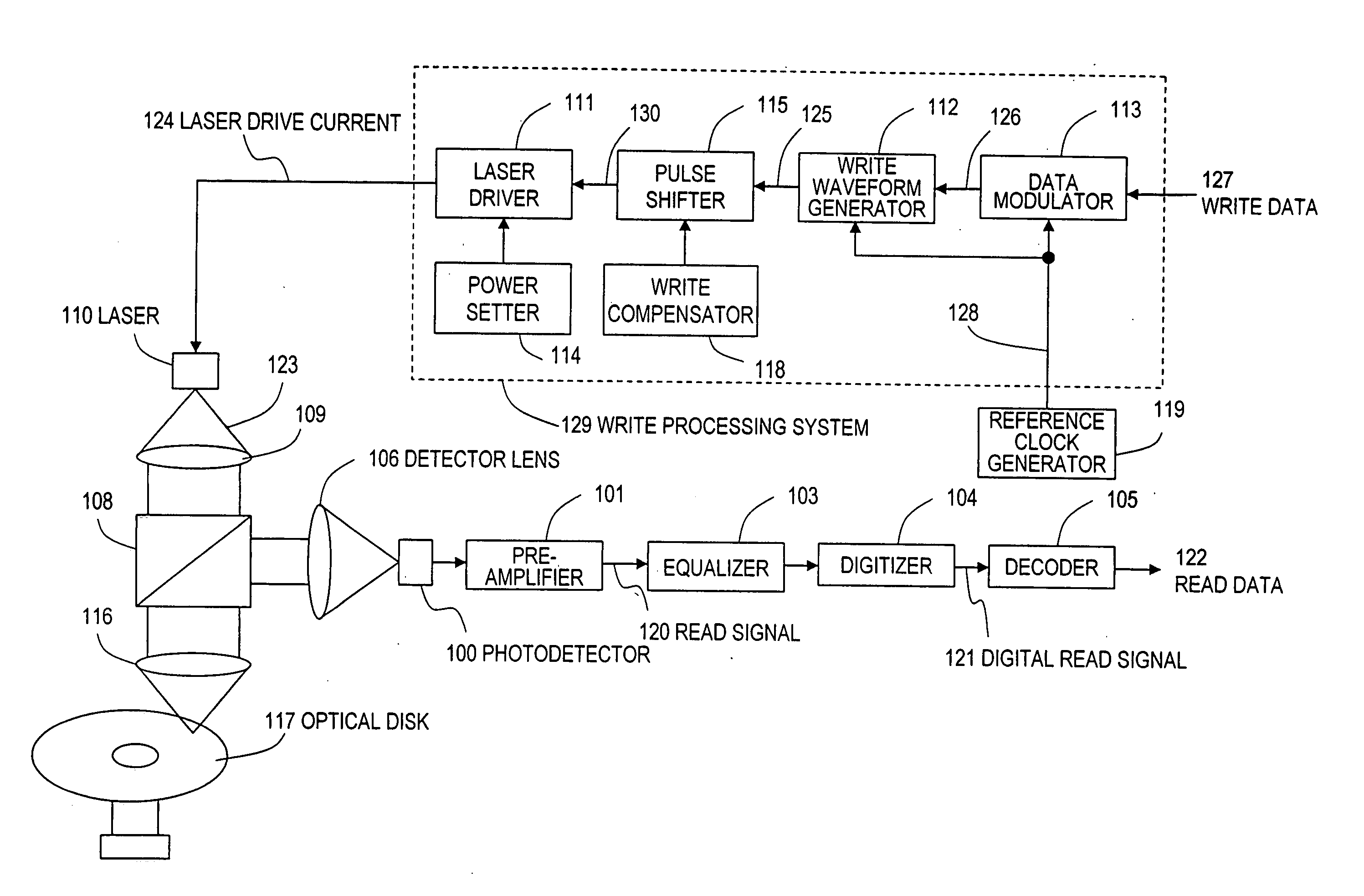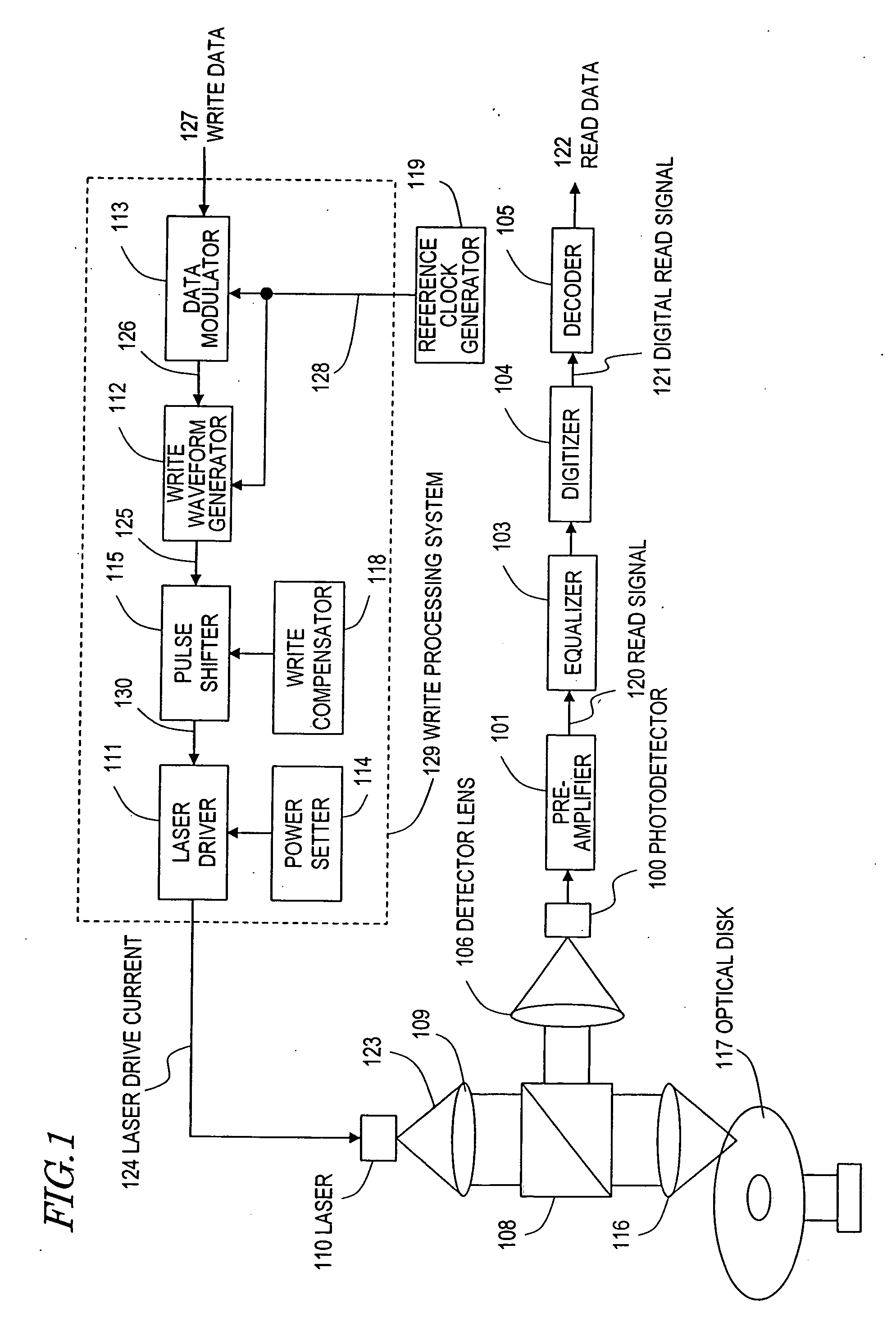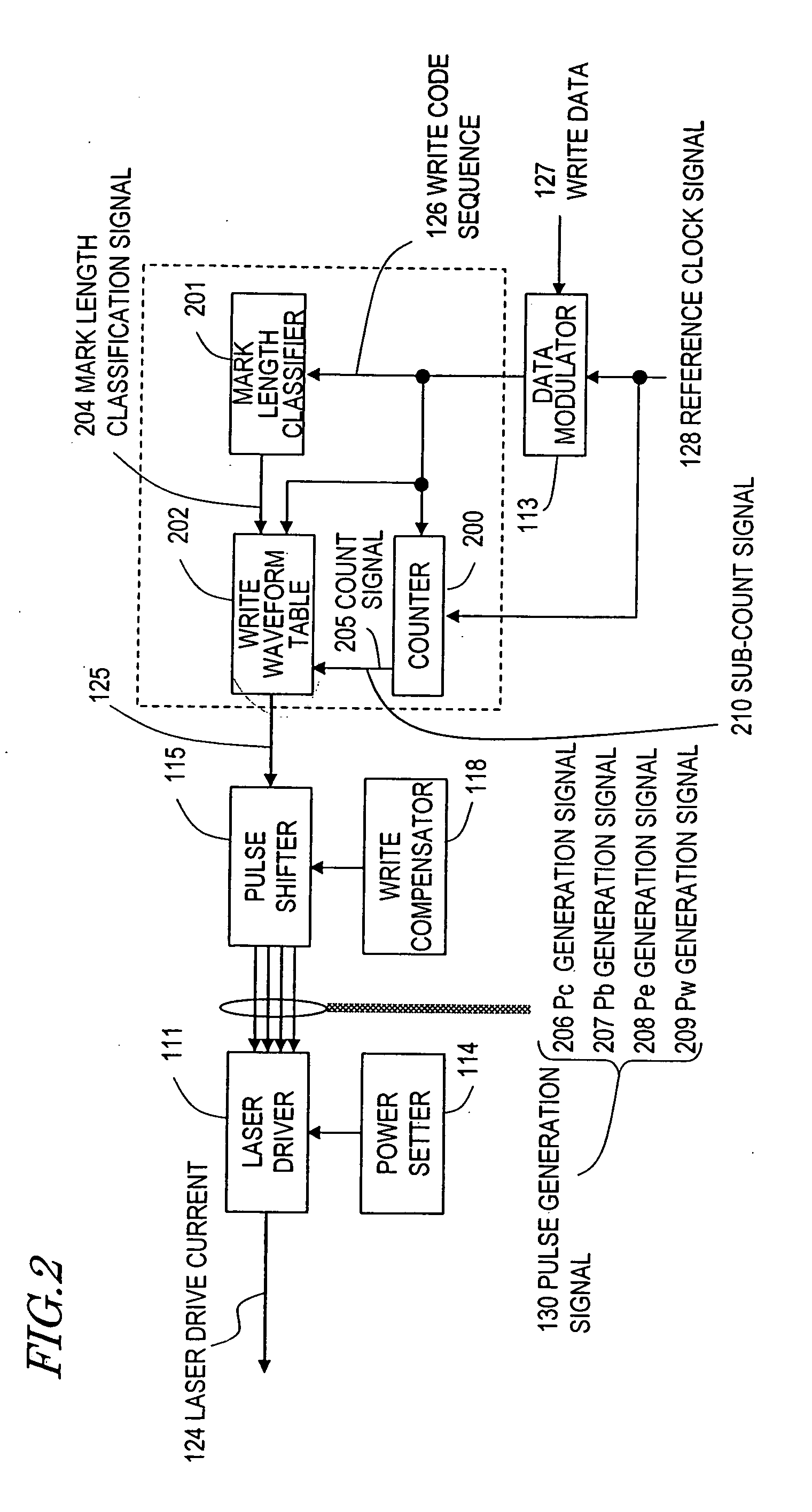Recording medium data recording method and device
a recording method and data technology, applied in the field of recording medium data recording methods and devices, can solve the problems of inability to make normal marks, inability to generate write beam pulses accurately, and inability to make marks according to the property of the storage medium
- Summary
- Abstract
- Description
- Claims
- Application Information
AI Technical Summary
Benefits of technology
Problems solved by technology
Method used
Image
Examples
embodiment 1
[0062] A first preferred embodiment of a data recorder according to the present invention will be described.
[0063] In this preferred embodiment, a phase change optical disk is used as a storage medium. However, the storage media that may be used in the present invention are not limited to optical disks of that type. Any other type of storage medium can also be used effectively in the present invention as long as the storage medium can locally make a “mark” with a different physical property from the other portions by applying some non-optical energy such as magnetic energy or electron beam to the storage medium.
[0064] The present invention is characterized by its write strategy of controlling the level of energy applied to a storage medium in recording data on the storage medium (i.e., write energy) highly precisely. As used herein, the “write energy level” means the average energy level of a laser beam in a period of time that is approximately a half as long as the detection wind...
embodiment 2
[0114] Hereinafter, a data recording method according to a second preferred embodiment of the present invention will be described with reference to FIG. 6.
[0115] The data recording method of this preferred embodiment can be carried out just by modifying the operation program for the data recorder of the first preferred embodiment described above. That is why the data recorder for use in this preferred embodiment has substantially the same configuration as the counterpart shown in FIGS. 1 and 2, and detailed description thereof will be omitted herein.
[0116] The write pulse waveforms 600 through 607 of this preferred embodiment will be described. with reference to portions (a) through (j) of FIG. 6.
[0117] As can be seen easily by comparing portions (a) through (j) of FIG. 6 to the counterparts of FIG. 4, the signal waveforms 600 through 607 adopted in this preferred embodiment are similar to the signal waveforms 400 through 407 shown in FIG. 4. Among other things, the signal wavefo...
embodiment 3
[0124] Hereinafter, a data recording method according to a third preferred embodiment of the present invention will be described with reference to FIG. 7.
[0125] The data recording method of this preferred embodiment can be carried out just by modifying the operation program for the data recorder of the first preferred embodiment described above. That is why the data recorder for use in this preferred embodiment has substantially the same configuration as the counterpart shown in FIGS. 1 and 2, and detailed description thereof will be omitted herein.
[0126] The write pulse waveforms 700 through 707 of this preferred embodiment will be described with reference to portions (a) through (j) of FIG. 7.
[0127] As can be seen easily by comparing portions (a) through (j) of FIG. 7 to the counterparts of FIG. 6, the signal waveforms 700 through 707 adopted in this preferred embodiment are similar to the signal waveforms 600 through 607 shown in FIG. 6. The difference between the second and t...
PUM
| Property | Measurement | Unit |
|---|---|---|
| wavelength | aaaaa | aaaaa |
| frequency | aaaaa | aaaaa |
| wavelength | aaaaa | aaaaa |
Abstract
Description
Claims
Application Information
 Login to View More
Login to View More - R&D
- Intellectual Property
- Life Sciences
- Materials
- Tech Scout
- Unparalleled Data Quality
- Higher Quality Content
- 60% Fewer Hallucinations
Browse by: Latest US Patents, China's latest patents, Technical Efficacy Thesaurus, Application Domain, Technology Topic, Popular Technical Reports.
© 2025 PatSnap. All rights reserved.Legal|Privacy policy|Modern Slavery Act Transparency Statement|Sitemap|About US| Contact US: help@patsnap.com



